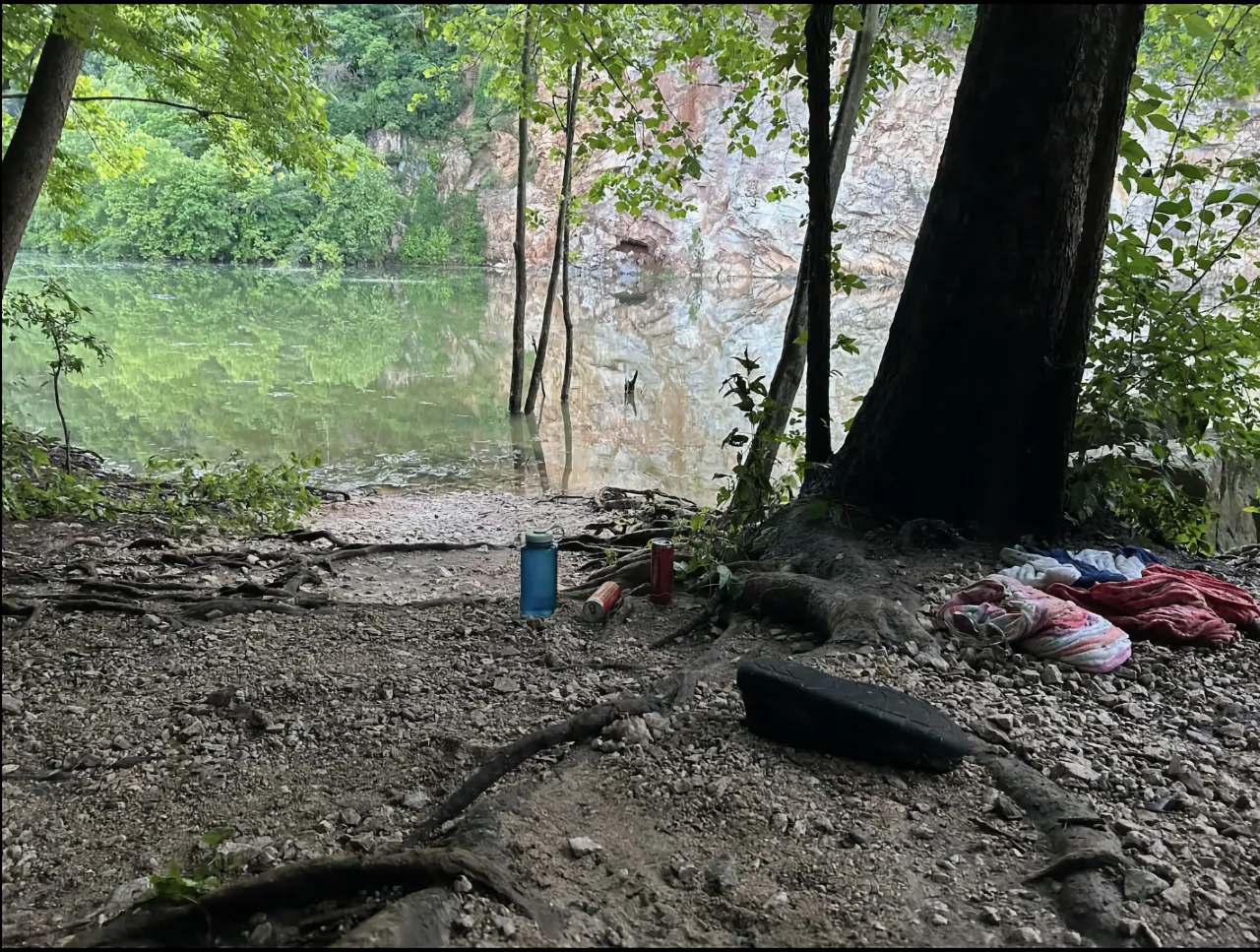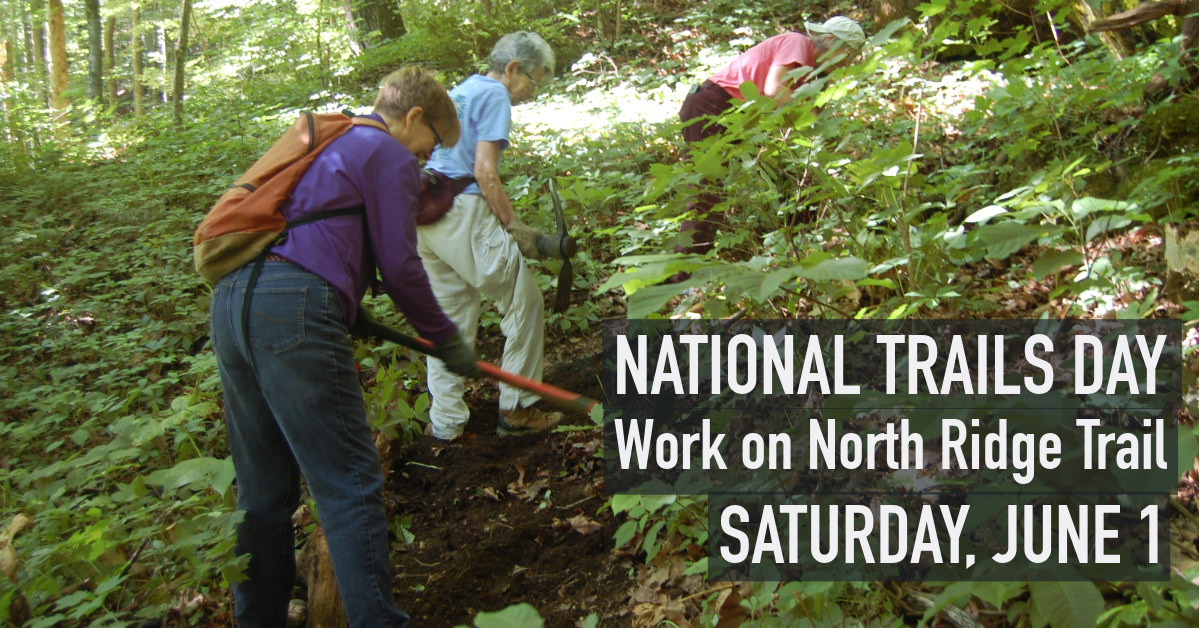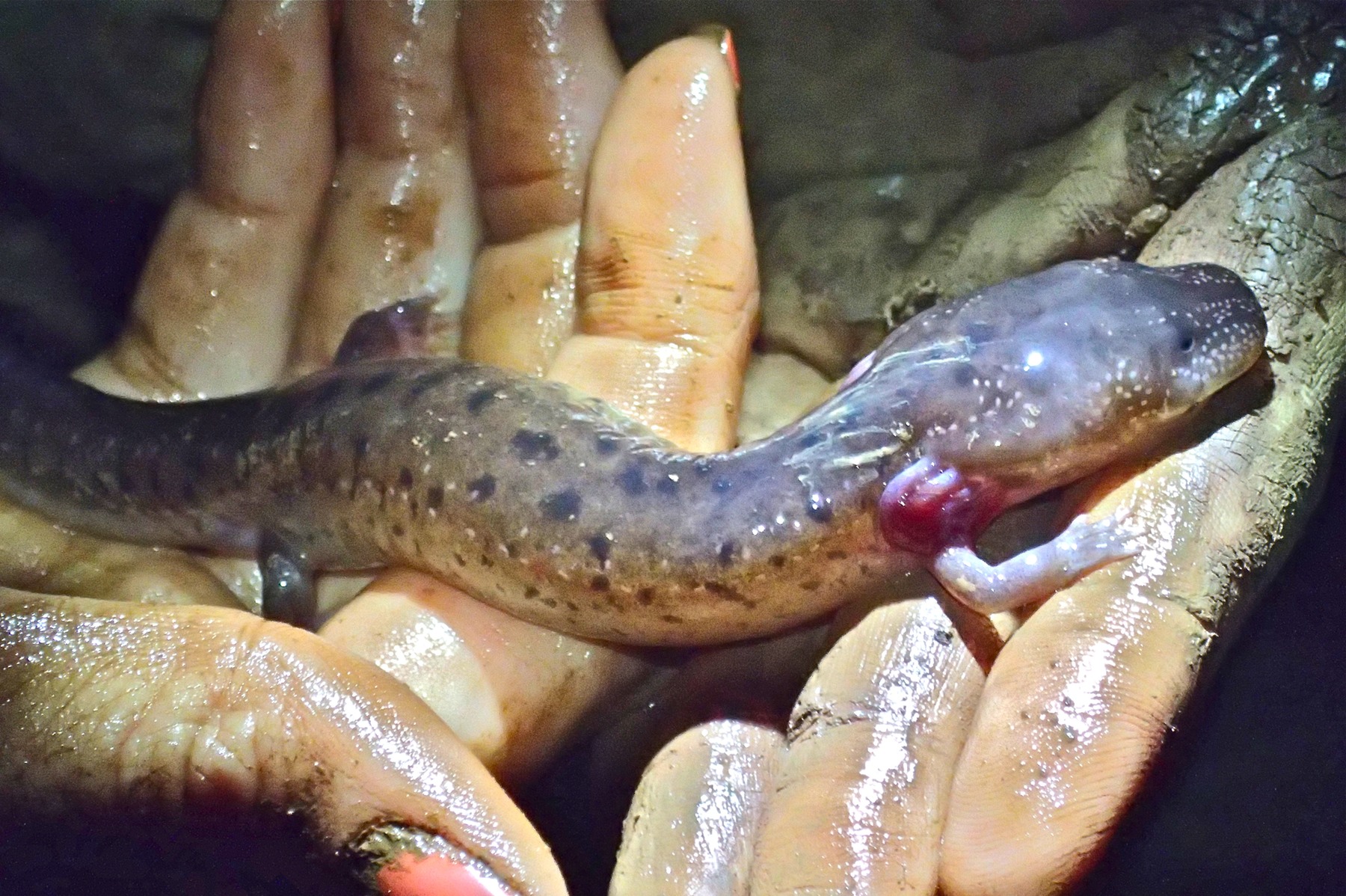News (810)
Children categories
ES! Initiatives (74)
EarthSolidarity!™ Initiatives are endeavors to which anyone can contribute in deed as well as in spirit, that
- minimize waste and environmental impacts
- increase community resilience
- respect and protect ecosystem processes and all forms of life
- contribute to good living conditions for everyone around the globe
- affirm and celebrate our interdependence and interrelatedness in the Web of Life!
Learn the basics and beauty of freshwater snorkeling at a Conservation Fisheries panel
 Andrew Zimmerman
Andrew Zimmerman
KNOXVILLE — Join Conservation Fisheries, Inc. and other experts for a discussion on how to HEAD UNDERWATER to snorkel and enjoy the beautiful underwater biodiversity of the Southern Appalachians.
The free event is set for 6-8 p.m. June 15 at Remedy Coffee, 800 Tyson Place, Knoxville.
The panel will be led by CFI Director Bo Baxter; Casper Cox from Hidden Rivers of Southern Appalachia; Jennifer Webster from Little River Watershed Association; and TVA Fisheries Biologist Justin Wolbert.
Stripes and spots: A tale of two Southern Appalachian skunks
Written by Matt Dhillon An eastern spotted skunk is seen in its signature defensive handstand. If the stance doesn’t deter predators it will let loose a caustic and malodorous spray akin to mace. Agnieszka Bacal via Virginia Department of Wildlife Resources
An eastern spotted skunk is seen in its signature defensive handstand. If the stance doesn’t deter predators it will let loose a caustic and malodorous spray akin to mace. Agnieszka Bacal via Virginia Department of Wildlife Resources
Striped skunks thrive as spotted cousins decline
This story was originally published by The Appalachian Voice.
BOONE — A characteristic white stripe on a black pelt is an instant warning to tread gently.
Nature’s stink bomb, the striped skunk (Mephitis mephitis) carries this distinctive mark on its back. But Appalachia has a second variety of this master of malodor, marked instead by a blotchy pattern of black and white fur.
The eastern spotted skunk (Spilogale putorius), was not always as rare as it is today. Decades ago, it was relatively common for trappers to catch the polecat, as it’s also known, for its pelt. But spotted skunk populations crashed between 1940 and 1970, according to a landmark paper from the University of Missouri looking at harvest data from trappers. By the 1980s, the study found, harvest numbers had plummeted by 99 percent, reflecting a steep decline in the skunk’s population.
Meanwhile, the spotted skunk’s striped cousin has thrived throughout the United States. So why have their populations diverged so drastically?
 A spotted skunk trapped as part of Emily Thorne’s Virginia Tech study of the animals. Emily Thorne
A spotted skunk trapped as part of Emily Thorne’s Virginia Tech study of the animals. Emily Thorne
Update: Rangers find body of man swept away by high water near Obed
Written by Thomas Fraser Cleanup crews clear a section of roadway in Big South Fork National River and Recreation Area following storms that swept the park May 26. National Park Service
Cleanup crews clear a section of roadway in Big South Fork National River and Recreation Area following storms that swept the park May 26. National Park Service
Search came as Big South Fork cleans up after May 26 storm that brought May rainfall total to 12 inches
WARTBURG — Searchers found the body of a man that was the subject of a search that began Memorial Day after he was swept away by high water in Daddy’s Creek in the Catoosa Wildlife Management Area in Morgan County.
Morgan County emergency management director Ethan Webb late Friday identified the victim as 57-year-old Wade Davis, originally identified by authorities as a Cumberland County resident. National Park Service personnel recovered the body about a mile downstream from Devils Breakfast Table near the Obed River. It is a rugged, steep area traversed by the Cumberland Trail.
Daddy’s Creek is a popular kayaking destination featuring class III and IV rapids that flows into the Obed River. Heavy rain had swollen the creek out of its banks, Webb said. Davis was with a family member when he lost his footing while wading and was swept downstream.
Multiple agencies were involved in the search “by air, by water and by land,” Webb said. “There wasn’t a day we didn’t search.” Drones, inflatable boats and a Highway Patrol helicopter were used. At least 25 people were involved at some point during the search, which was complicated by the speed of the water and rapids.
“We were in constant contact with the family,” he said. On Friday, the family received at least a measure of closure.
- obed wild and scenic river
- man missing in obed river
- search for man obed river
- big south fork national river and recreation area
- big south fork storm
- may rainfall big south fork
- tennessee wildlife resources agency
- morgan county rescue squad
- cumberland county rescue squad
- tennessee highway patrol
- national park service
- daddy’s creek
- catoosa wildlife management area
TWRA recovers body of teenage drowning victim

ROCKWOOD — Tennessee Wildlife Resources Agency officers and local agencies recovered the body of Roane County resident, 19-year-old Braeden Hartup, from Watts Bar Reservoir just after 2 a.m. May 26.
The initial 911 call, concerning a male who had jumped from a boat and did not resurface, came in just after 9 p.m. May 25. Hartup and 10 others were on an anchored pontoon just south of Rockwood, near the Winton Chapel Access Area. Witnesses stated that Hartup decided to swim and jumped into the water from the front of the boat. Hartup was not wearing a life jacket.
TWRA officers and local agencies used a remote-operated vehicle to locate and recover Hartup’s body in 24 feet of water. The body was transported to the Knox County Medical Examiner’s Office. This is the eighth boating related fatality this year. The incident remains under investigation.
Find boating and statistical information at tnwildlife.org.
Rockslide spawns dangerous waves at popular quarry teeming with holiday weekend revelers
Written by JJ StambaughOne person hung on for dear life as big waves churned back and forth for minutes.
 Thanks to our friends at Compass for linking our original coverage and pointing us to the video of the spine-chilling incident. Tap the More… button to access the full original article, which begins below, and the video from which we snapped this frame.
Thanks to our friends at Compass for linking our original coverage and pointing us to the video of the spine-chilling incident. Tap the More… button to access the full original article, which begins below, and the video from which we snapped this frame.
 Towels, shoes, plastic toys and sunglasses were among the items left behind Saturday afternoon when dozens of people were forced to flee as powerful waves battered the shoreline after a rockslide at Mead’s Quarry Lake. J.J. Stambaugh/Hellbender Press
Towels, shoes, plastic toys and sunglasses were among the items left behind Saturday afternoon when dozens of people were forced to flee as powerful waves battered the shoreline after a rockslide at Mead’s Quarry Lake. J.J. Stambaugh/Hellbender Press
At least one person transported by ambulance; witness describes other injuries at Mead’s Quarry
KNOXVILLE — Calvin Sebourn was one of dozens of men, women and children who found themselves fighting for their lives Saturday afternoon at Mead’s Quarry Lake when a sudden rockslide triggered 10-foot-tall waves that inundated the opposite shore.
Luckily, it appeared that no more than five people received minor injuries and only one of them was hurt badly enough to warrant an ambulance trip to a nearby hospital.
The quarry is one of the most popular attractions at Ijams Nature Center in South Knoxville, and authorities said Saturday night it would be closed until further notice while the site is inspected.
Nashville Zoo gives hellbenders a head start in Middle Tennessee
Written by Nashville ZooThe species is listed as endangered in the state of Tennessee; zoo heads up years-long conservation effort
This Nashville Zoo blog post is reprinted with permission.
NASHVILLE — Nashville Zoo’s ectotherm team, in partnership with Tennessee Wildlife Resources Agency and Tennessee State University, traveled to a waterway in Middle Tennessee to successfully release a total of 27 eastern hellbender salamanders back into the wild. These hellbenders had been raised since 2018 at the Zoo as part of a headstart program. Since the start of this conservation initiative, the Zoo has released more than 100 hellbenders into local Tennessee streams to help bolster the population of this state-endangered species.
The hellbenders released this year had been raised since 2018 at the Zoo as part of a headstart program, after being collected as eggs from streams in Middle Tennessee. Each animal was fitted with a radio transmitter earlier this year, allowing a team of graduate students to track and monitor the hellbenders throughout the summer. This is the fourth group of hellbenders to be released back into the wild since the summer of 2021.
Learn about TVA’s switch from coal to natural gas at June 12 teach-in

Water supply demands could strain Duck River’s rare riverine habitat
Written by Anita Wadhwani John McEwan, whose family has lived on the banks of the Duck River since the 1860s, skips stones on the Duck River. Environmental groups fear excessive demand is fueling drawdowns that are affecting the rich biodiversity of the Middle Tennessee river.&nsp; Tennessee Lookout/John Partipilo
John McEwan, whose family has lived on the banks of the Duck River since the 1860s, skips stones on the Duck River. Environmental groups fear excessive demand is fueling drawdowns that are affecting the rich biodiversity of the Middle Tennessee river.&nsp; Tennessee Lookout/John Partipilo
Long time residents and conservation groups say industry lured by the state, population growth are draining water from a river prized for its biodiversity
This story was originally published by Tennessee Lookout.
COLUMBIA — When Gov. Bill Lee announced the state had lured a General Motors lithium battery supplier to Spring Hill three years ago, it was his largest economic announcement to date:
A $2.6 billion corporate investment; 1,300 new jobs; a major stepstone along Tennessee’s path to become an EV hub — helped along by a then-record $46,000 per job in taxpayer incentives.
The factory deal’s less conspicuous specs — its continuous need for 1.4 million gallons of water per day — is now figuring in a larger battle pitting citizens and conservation groups against state environmental regulators.
Last month, the Tennessee Department of Environment and Conservation (TDEC) granted permission to Columbia Power and Water Systems — which pumps water to the new Ultium Cells plant — to increase its current withdrawals from the Duck River by 60 percent.
It’s one of eight water companies along the Duck River seeking to dramatically increase water draws to meet rising demands for water in the rapidly growing five-county region southwest of Nashville.
- duck river
- duck river biodiversity
- tennessee lookout
- middle tennessee environment
- lithium batteries
- gov bill lee environment
- john mcewan
- hickman for the duck
- ultium cells plant water use
- doug jones duck river
- anita wadhwani
- water demand
- water supply
- economic growth
- general motors
- southern environmental law center
- tennessee department of environment and conservation
- tdec
- columbia power and water systems
- spring hill, tn
- george nolan
Hellbender Press garners first-place award for investigation into proposed Oak Ridge airport
Written by Thomas Fraser
The honor continues Hellbender Press’s tradition of excellence in journalism.
KNOXVILLE — Hellbender Press: The Environmental Journal of Southern Appalachia, was honored with a first-place award by the East Tennessee Society of Professional Journalists (ETSPJ) for its probe into a controversial municipal airport proposed by the city of Oak Ridge.
Reporters Wolf Naegeli and Ben Pounds and Hellbender Press editor and publisher Thomas Fraser accepted the award during ETSPJ’s 2023 Golden Press Card awards, held May 16 at Maple Hall in downtown Knoxville. The honors, which are bestowed upon television, radio, print and digital media, “strive to honor the best journalism in the eastern region of Tennessee from the past year,” according to ETSPJ.
Hellbender Press was honored with first place in the digital space for its investigation into the proposed airport, which the city maintains would juice economic development, especially in the high-tech business realm.
Follow some protocols during No-Mow May or risk the sting of a city codes violation
Written by Thomas Fraser Gerry Moll is seen in the native garden of his home in the 4th and Gill neighborhood of Knoxville in this file photo. Moll tends to his natural habitat in keeping with city codes protocols. Ben Pounds/Hellbender Press
Gerry Moll is seen in the native garden of his home in the 4th and Gill neighborhood of Knoxville in this file photo. Moll tends to his natural habitat in keeping with city codes protocols. Ben Pounds/Hellbender Press
City: Overgrown lots don’t automatically qualify as wildlife habitat
KNOXVILLE — City government wants people to know that though “No Mow May” is a worthy observation there are still some protocols residents have to follow to avoid codes violations and potential fines.
The month of May is hyped as a prime time to refrain from cutting your grass or portions of your lawn to allow pollinating plants and the pollinators they support to get six legs up late spring and early summer nectar season. It’s also an occasion to consider the fact that traditional lawns are largely ecological deserts.
“No Mow May” is a quick and catchy name for a movement that aims far beyond not mowing the yard for a month,” according to Bee City USA, a proponent of keeping your yard real and wild when and where it is practical.
“It’s more than long grass and dandelion blooms. It’s a gateway to understanding how we share our lawns with many small creatures.”
It goes beyond bees and butterflies and other pollinating insects. Many ground-nesting birds are on the decline due to loss of grassy habitat. Native grasses also serve as habitat for small mammals such as rabbits and mice, which in turn provide a buffet for raptors such as owls, hawks and eagles.
Hellbender Press has reported on cultivation of such natural landscapes and habitats within the city limits. Groups such as the Native Plant Rescue Squad can also provide plants and guidance.
Celebrate National Trails Day with a work party in Oak Ridge

OAK RIDGE — Tennessee Citizens for Wilderness Planning and the North Ridge Trail maintenance volunteers invite everyone to our 2024 National Trails Day work project on the North Ridge Trail.
Work on the Orchard Lane access trail will begin at 9 a.m. June 1.
The access trail is located along a water drainage route. Erosion along the ditch has made the trail difficult to follow. We will work to relocate the first 130 feet of the access trail away from the water route.
Bring drinking water, sunscreen, insect repellent and good gloves. TCWP will provide some work tools, but feel free to bring any of your personal tools, including grubbing tools such as mattocks, Pulaskis, fire rakes, rogue hoes and/or McLeods fire tools. After the work is completed, a pizza lunch will be provided a short drive from the work location.
Appeals court: Wildlife officers’ warrantless searches of private property are unconstitutional
Written by Anita Wadhwani Hunter Hollingsworth, at his family’s Benton County property, successfully sued the Tennessee Wildlife Resources Agency over unwarrantless searches of his property. An appellate court upheld a lower court ruling against the agency. John Partipilo/Tennessee Lookout
Hunter Hollingsworth, at his family’s Benton County property, successfully sued the Tennessee Wildlife Resources Agency over unwarrantless searches of his property. An appellate court upheld a lower court ruling against the agency. John Partipilo/Tennessee Lookout
This story was originally published by Tennessee Lookout.
In a blistering and unanimous opinion, the judges called TWRA’s legal defense of its tactics a “disturbing assertion of power on behalf of government.”
NASHVILLE — State game wardens cannot enter private property in Tennessee without a warrant, the state’s Court of Appeals ruled last week.
The decision puts in check a unique power wielded for decades by the Tennessee Wildlife Resources Agency to secretly patrol and surveil Tennesseans’ privately-owned lands for potential violations of hunting, fishing and wildlife laws.
TWRA officers don’t seek permission from a judge before entering private property, need no supervisor approval, keep no records of their searches and don’t inform property owners — sometimes donning camouflage or installing cameras to secretly monitor activities based on the suspicions of an individual officer.
The blistering and unanimous opinion by a three-judge panel compared TWRA’s tactics to British customs officials who were granted unlimited “writs” by the king of England to conduct arbitrary searches in the years leading to the Revolutionary War — abusive actions that would go on to inform the establishment of the U.S. Constitution’s 4th Amendment protecting Americans from illegal government searches and seizures.
- twra
- twra abuses
- twra warrantless searches
- tennessee court of appeals
- 4th amendment
- colonial boston
- tennessee constitution
- search protections
- article 1, section 7 of the tennessee constitution
- twra property rights
- terry rainwaters tennessee
- emily buck twra
- hunter hollingsworth
- institute for justice
- joshua windham
- tennessee lookout
- anita wadhwani
Rare Tennessee salamander at center of new Endangered Species Act lawsuit
Written by Southern Environmental Law Center Environmental groups are suing the U.S. government to force addition of the Berry Cave salamander to the Endangered Species List. It is one of the largest cave salamanders, and can grow up to 6 inches. Dr. Matthew Niemiller
Environmental groups are suing the U.S. government to force addition of the Berry Cave salamander to the Endangered Species List. It is one of the largest cave salamanders, and can grow up to 6 inches. Dr. Matthew Niemiller
50 percent of the known Berry Cave salamander population is in rapidly developing Knox County
KNOXVILLE — The Southern Environmental Law Center, on behalf of the Center for Biological Diversity, sued the U.S. Fish and Wildlife Service on May 7, arguing that the agency violated federal law when it denied Endangered Species Act protections for a rare salamander that is only found in a handful of East Tennessee caves.
The Berry Cave salamander has pink feathery gills, lives its entire life in caves, and can grow to over 9 inches in length — making it the largest cave-dwelling salamander in North America. The salamander is also incredibly rare. Populations have been found in just a small number of isolated caves, and in several of these caves only one salamander has ever been observed.
Unique to our bioregion
“The Berry Cave salamander is found nowhere else on Earth, and its populations are dwindling in the face of rapid development and a changing climate,” said Liz Rasheed, a senior associate attorney at the Southern Environmental Law Center. “This lawsuit seeks to correct an egregious error that puts this incredible salamander at an even greater risk of extinction.”
- berry cave salamander
- endangered species act
- southern environmental law center
- center for biological diversity
- matthew niemiller
- us fish and wildlife service
- liz rasheed
- meads quarry cave
- chelsea stewartfusek
- knox county caves
- east tennessee water quality
- endangered species act lawsuits
- salamanders
- salamander biodiversity
- salamander populations
- mead's quarry
Baby sturgeon hit the river in latest phase of 25-year restoration effort
Written by Doug Strickland This juvenile lake sturgeon was one of 50 released into the Tennessee River from Chattanooga’s Coolidge Park on May 2. The lineage of the fish can be traced millions of years, but overfishing, dams and habitat destruction has led to widespread population declines throughout its natural range. Doug Strickland/Tennessee Aquarium
This juvenile lake sturgeon was one of 50 released into the Tennessee River from Chattanooga’s Coolidge Park on May 2. The lineage of the fish can be traced millions of years, but overfishing, dams and habitat destruction has led to widespread population declines throughout its natural range. Doug Strickland/Tennessee Aquarium
Lake sturgeon recovery links rivers and experts in Tennessee and Wisconsin
Doug Strickland is a writer for the Tennessee Aquarium in Chattanooga.
CHATTANOOGA — Just across from the iconic peaks of the Tennessee Aquarium on the shore of the Tennessee River, a group of scientists with the Tennessee Aquarium Conservation Institute gathered on an early May morning to restore a primordial fish to the state’s primary waterway.
One by one, they carefully navigated down a boat ramp at Coolidge Park before gently releasing juvenile lake sturgeon, each just under a foot in length, into the river’s shallows.
These 50 sturgeon were the final youngsters to be reintroduced from a class of hundreds of sturgeon fry that arrived at the Conservation Institute’s freshwater field station last summer. Their introduction to the Tennessee River represented the latest milestone of a decades-long conservation effort to restore this state-endangered fish.
Despite reclaiming their one-time home in the waters of the Volunteer State, these newfound Tennesseans began life some 850 miles north of Chattanooga.
- lake strugeon release
- lake sturgeon working group
- lake sturgeon
- sturgeon in tennessee river
- sturgeon reintroduction
- sturgeon guard
- cumberland river sturgeon
- wolf river in wisconsin
- showano, wisconsin
- coolidge park chattanooga
- tennessee aquarium conservation institute
- tennessee aquarium
- sarah kate bailey
- warm springs national fish hatchery
- margaret stadig
- clean water act of 1972
- helaina gomez tennessee aquarium
- are there sturgeon in tennessee river?
- sturgeon spawning
- doug strickland
Tennessee’s mighty Duck River is gravely imperiled
Written by Anita Wadhwani A view of the Duck River, Tennessee longest river, from Old Stone Fort in Manchester. John Partipilo/Tennessee Lookout
A view of the Duck River, Tennessee longest river, from Old Stone Fort in Manchester. John Partipilo/Tennessee Lookout
The Duck landed third on American Rivers’ list of most endangered rivers in the U.S.
This story was originally published by Tennessee Lookout.
COLUMBIA — The Duck River, which winds through seven Middle Tennessee counties for more than 260 miles before reaching the Tennessee River, is among the most endangered rivers in the United States, according to a new report by the advocacy group American Rivers.
Threatened by population growth, development and climate change “urgent action is needed to safeguard this vital ecosystem,” the report released Tuesday said.
The Duck River serves as the source of drinking water for nearly 250,000 Tennesseans. Industry and agriculture depend on it, too. Often considered one of Tennessee’s most pristine waterways, it draws more than 150,000 people each year for boating, fishing and other recreation. Last year, in an effort to protect the river from a controversial plan to establish a landfill near its banks, state lawmakers designated a portion of the river in Maury County an official state scenic waterway.
More...
Resisting the alien invasion: Oak Ridge work party highlights threat of invasive plants
Written by Ben Pounds Regina Santore with the Wild Ones Smoky Mountains Chapter puts garlic mustard into a bag during an April volunteer event along a greenway in Oak Ridge. Ben Pounds/Hellbender Press
Regina Santore with the Wild Ones Smoky Mountains Chapter puts garlic mustard into a bag during an April volunteer event along a greenway in Oak Ridge. Ben Pounds/Hellbender Press
Volunteers fight exotic and invasive garlic mustard on Oak Ridge greenway
OAK RIDGE — Plants from around the world are overrunning the Southeast’s wild places, causing problems for native flora and fauna.
It’s a problem that’s grabbed the attention and work of dedicated organizations. One of them, the Tennessee Invasive Plant Council has many strategies to solve this problem: volunteer weed-pulling events, guides to help gardeners find native plants from which to choose, and even legislation. Its vice president, Jamie Herold, has many thoughts on the issue. She was eager to share them over pizza after a morning of pulling one such invasive, garlic mustard, at an event in Oak Ridge organized by Tennessee Citizens for Wilderness Planning, and Greenways Oak Ridge.
The event involved pulling garlic mustard, a plant originally from Europe, from the edge of the woods behind apartments on West Vanderbilt Avenue. This area includes the Wildflower Greenway, a trail full of wildflowers that locals have been eager to protect from the garlic mustard’s domination.
- exotic invasive
- exotic species
- invasive plants
- invasive plant control
- invasive species
- oak ridge greenway
- garlic mustard
- tennessee invasive species
- tennessee invasive plant council
- jamie herold
- regina santore
- roger macklin
- wildflower greenway
- tennessee citizens for wilderness planning
- greenways oak ridge
- wild ones smoky mountains chapter
- biodiversity
You feel lucky? Smokies sets synchronous firefly lottery.
GATLINBURG — Great Smoky Mountains National Park will host the annual synchronous firefly viewing opportunity at Elkmont from Monday, June 3 through Monday, June 10. The public may apply for the limited viewing opportunity by entering a lottery for a vehicle reservation through www.recreation.gov.
The lottery opens for reservation applications on Friday, April 26 at 10 a.m. EDT and closes Monday, April 29 at 11:59 p.m. EDT. Using the lottery system ensures everyone who applies for a reservation has an equal chance of getting one.
Want to help wildlife? TWRA to host huge habitat-improvement event

Sharing the love: Grayson Subaru presents $39K check to Ijams Nature Center
 Grayson Subaru presented a check for $39,000 from Subaru of America’s 2023 Subaru Share the Love Event to Ijams Nature Center on April 24. Funds will be used to expand the popular Ijams Nature Playscape at Grayson Subaru Preserve and the Mead’s Quarry Lake swim area. Ijams Nature Center
Grayson Subaru presented a check for $39,000 from Subaru of America’s 2023 Subaru Share the Love Event to Ijams Nature Center on April 24. Funds will be used to expand the popular Ijams Nature Playscape at Grayson Subaru Preserve and the Mead’s Quarry Lake swim area. Ijams Nature Center
KNOXVILLE — Grayson Subaru gave $39,000 to Ijams Nature Center to expand the popular Ijams Nature Playscape at Grayson Subaru Preserve and the Mead’s Quarry Lake swim area.
The local retailer chose the nonprofit nature center as its hometown charity for Subaru of America Inc.’s 2023 Subaru Share the Love® Event. From Nov. 15, 2023, to Jan. 2, Subaru and its retailers donated a minimum of $300 for every new Subaru vehicle purchased or leased at more than 628 of its retailers nationwide to several national charities and a hometown charity chosen by each retailer.
“Subaru of America and Grayson Subaru are committed to the communities we serve,” Subaru Sales Manager JC Marquardt said. “We do that by showing support in ways that make a meaningful difference, and we’re incredibly grateful to our customers, who share our values and are committed to doing the same. This is a proud day for all of us.”
Work has already begun on Phase 2 of the Ijams Nature Playscape.
“Thus far, Ijams staff have scouted the new trail and, with the help of 115 trained volunteers, removed invasive species from about one acre of the new section,” Ijams President and CEO Amber Parker said. “This is the most time-consuming part of the process, because there is a more diverse mix of invasive and native species, and removal has to be done by hand.”
In addition to preparing the upper section of the 13.46-acre property, Ijams is planning a new feature to Phase 1 of the playscape after conducting a survey of the people who were using it.
“We learned that people wanted a way to cross through the mushier spots of the floodplain in an area we call the ‘Soggy Bottom Room,’ so we’re creating a narrow path of wood over utility poles to make a bog walkway,” she said. “We recently salvaged a large palette that was mired in the mud along the Tennessee River and will use that reclaimed wood in the project. There are perks to having an Ijams River Captain keeping our waterways clear!”
Parker said improvements to the Mead’s Quarry swim area will start at a later date.
